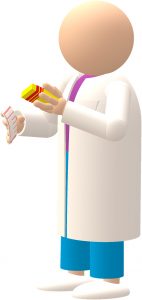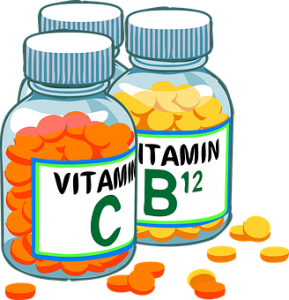Understanding the role of the pharmacist in relation to eye diseases and their treatment requires a brief review of the regulatory profiles governing the pharmacist's profession and a mention of some of the issues related to contemporary society, in which many services dedicated to the health and wellbeing of the individual have developed.
The pharmacist performs a complex profession, regulated both by legislative sourceswhich identify the responsibilities (civil, criminal, deontological, disciplinary and erudicial respectively), permitted activities and limits, which by jurisprudential sources (court rulings and opinions), which clarify and specify their contents in parallel with the evolution of the social context itself.
The activity of the pharmacist is among the health professions that constitute a public service and as such are governed by Articles 99 et seq., Royal Decree No 1265 of 27 July 1934 (T.U. health laws).
Among the liability profiles, we mention some interesting aspects.
Deontological responsibility
The Code of Ethics which 'brings together the norms and principles to guarantee the citizen, the community and to protect the ethics, dignity and decorum of the profession of pharmacist' (Article 1) constitutes the reference instrument of the professional Order and the members of the Register.
Deontological liability, as such, can also exist in the absence of damage and/or offenceon the grounds that fundamental principles of conduct for the profession have been violated (Central Commission for Health Professions pronouncement no. 95 of 14/12/2009).
The discipline dictated by the code of conduct is directed towards a goal of primary importance for the entire community: the security in the dispensing of medicinal products.
 In this sense, the obligation enshrined in the first paragraph of theArticle 26: "The pharmacist must reject requests for medicines without a prescription or veterinary or written on prescriptions that do not meet the requirements laid down by law'.
In this sense, the obligation enshrined in the first paragraph of theArticle 26: "The pharmacist must reject requests for medicines without a prescription or veterinary or written on prescriptions that do not meet the requirements laid down by law'.
This rule clearly applies to all cases of dispensing drugs for ophthalmic use for which a prescription is required, such as antibiotics, antibiotic-anti-inflammatory combinations, antiglaucomatosis, antihistamines, etc.
The above-mentioned standard is closely related to the prohibition of diagnosisThis is because the pharmacist is not called upon to take the place of the doctor, whereas it is his task to facilitate knowledge of the purpose of prescribed therapies, the correct way to take medicines and patient compliance.
Since the pharmacist also plays the role of 'patient advisor', the code of ethics lays down some important rules, such as the obligation set out in theArticle 7according to which the pharmacist must always be recognisable by wearing a white coat with the Order's logo.
Furthermore, the second paragraph ofArticle 12 specifies that 'The pharmacist promotes theresponsible self-medication and discourages the use of self-medication medicines when not justified by therapeutic needs'.
This important indication becomes important when the pharmacist is called upon to recommend over-the-counter or non-prescription products to the patient, such as artificial tears or useful aids for proper ocular hygiene.
Civil liability towards the patient
In civil law terms, the liability of the pharmacist is governed by Art. 2043 of the Civil Code which obliges those who negligently or wilfully cause damage to compensate for it.
The assumption is that the dispensing of the drug is part of the hazardous activities and Article 2050 of the Civil Code provides that it is the professional who must prove that the accident is not his fault, while the client/patient is only required to prove the causal link, i.e. that the damage is a consequence of the professional's action and/or omission.
It should also be remembered that the pharmacist owner is also civilly liable for damages caused by its employees or collaborators (Art. 1228 of the Civil Code).
The pharmacist is exempt from liability, according to established case law, when he or she follows the doctor's prescription.
The only exception arises when the pharmacist identifies, in the prescription, the prescription of poisonous substances in non-medicinal or dangerous doses, in which case he must require the doctor to declare in writing that the administration takes place under his responsibility, after having indicated the therapeutic purpose pursued (Article 40, Royal Decree 1706/1938).
A special case in point is the prescription of equivalent medicines paid for by the National Health Service, as is often the case with ophthalmic therapy for anti-glaucomatous, anti-inflammatory or antibiotic drugs.
Article 7 paragraph 1 of Law 405/2001 and Law 149/2005 converting Decree-Law 87/2005 in fact established that the pharmacist, if the doctor does not indicate theirreplaceability of the prescribed drugafter informing the patient, must deliver to the latter the drug, with the same active ingredient, pharmaceutical form, route of administration, method of delivery, number of posological units and unit doses, having the lowest price, leaving the final choice to the patient in all cases.
Dispensing errors
The most common errors in dispensing by pharmacists, according to data collected by regulatory authorities and/or found in case law, generally concern
- Incorrect writing by the doctor
- Misreading by the pharmacist
- Exchange of drugs due to similarity of names or packaging
- Different dosages for different age groups in identical packages
- Dispensing of expired drugs
- Incorrect indication of the correct route of administration
Pharmacist counselling
Counselling by the pharmacist requires in-depth knowledge not only of the pharmaceutical handbook, but also of over-the-counter products such as food supplements, medical devices and cosmetic products.
In the case of drugs, as we have seen, the pharmacist is only obliged to deliver medicinal products on prescription, but may be asked by the customer/patient about interactions between drugs, between drugs and food, possible contraindications and possible side effects.
It can also provide valuable information to prevent misuse, incongruous dosing, taking antagonistic drugs, premature discontinuation or unnecessary prolongation of therapy.
In fact the first paragraph of Art. 15 of the Code of Ethics states that 'In the activity of dispensing, advice and professional counselling, the pharmacist shall ensure clear, correct and complete health information, with particular reference to the appropriate use of medicines, their contraindications and interactions, side effects and their storage'.
The pharmacist can, therefore, provide tips detailed information to patients on all non-prescription medicines and over-the-counter or self-medication medicines, taking into account the indications established by theArticle 12 of the Code of Ethics, which we discussed earlier.
Nutritionist pharmacist?
A very topical issue concerns the pharmacist's ability to prescribe diets for therapeutic purposes.
First of all, it is necessary to point out that, to date, in Italy there is no explicit regulatory framework for the health figure of the 'nutritionist', a profession that is instead expressly provided for in Norway, Portugal, Iceland and Malta.
 On this burning issue, FOFI (Federazione degli Ordini dei Farmacisti Italiani - Federation of Italian Pharmacists' Associations) has expressed a precise opinion: 'The pharmacist may exercise the activity of nutritionist, in compliance with the legislation in force, limiting the activity in the field of nutrition to the consultancy only". Specifically, FOFI emphasises that 'as a general rule, pharmacists, even specialised ones, cannot prescribe diets, but can only provide advice and give information regarding medicines, food supplements and, in any case, other products sold in pharmacies (opinion of the Consiglio Superiore di Sanità of 15 December 2009). The prescription of diets, in fact, is reserved to the competence of the doctor, biologist and dietician'.
On this burning issue, FOFI (Federazione degli Ordini dei Farmacisti Italiani - Federation of Italian Pharmacists' Associations) has expressed a precise opinion: 'The pharmacist may exercise the activity of nutritionist, in compliance with the legislation in force, limiting the activity in the field of nutrition to the consultancy only". Specifically, FOFI emphasises that 'as a general rule, pharmacists, even specialised ones, cannot prescribe diets, but can only provide advice and give information regarding medicines, food supplements and, in any case, other products sold in pharmacies (opinion of the Consiglio Superiore di Sanità of 15 December 2009). The prescription of diets, in fact, is reserved to the competence of the doctor, biologist and dietician'.
Therefore, according to this interpretation, the prescription of diets remains reserved to the dieticiani.e. a medical graduate and duly registered with the national medical register, who may prescribe a diet for therapeutic purposes, i.e. for reasons of health and not fitness weight.
It should also be pointed out that:
- the nutritionist biologist is legitimately entitled to devise a diet therapy to improve the patient's wellbeing, as he or she is able to assess the energy and nutritional needs of a healthy person or a person suffering from a disease that requires proper nutrition. Unlike the dietician, however, the biologist can only determine the contents of a diet if it has previously been prescribed by the surgeon.
- the dietician, a professional with a specific three-year degree in this subject, who can work in both public and private facilities, can collaborate in formulating a diet for therapeutic purposes, subject to a doctor's prescription.
"In this regard," FOFI emphasised, "the Supreme Court of Cassation, in a recent ruling, stated that "integrates the offence of abusive exercise of a profession, the activity of a person who provides personalised dietary advice, based on the assessment of the physical characteristics of each client, characterised by precise prescriptions and predictions, without, however, belonging to the professional categories that have specific expertise in the area of dietary needs'(Cass. pen. Sec. VI Sent., 30/03/2017, no. 20281)".
Contradicted, therefore, is the position taken in October 2018 by ANEF (Associazione Farmacisti Esperti in Nutrizione - Association of Pharmacists Experts in Nutrition), which had instead argued that the pharmacist can draw up diets, since "... the identification of man's dietary needs by means of schemes established for the individual with rigid forecasts and prescriptions, if not exclusive to the medical biologist, may compete with other professional categories for which the acquisition of a specific qualification is in any case prescribed, such as doctors, pharmacists, dieticians, without prejudice to the competences established in the sector regulations, but never, because of the repercussions in terms of public health, be exercised by persons who lack competence in health matters.."".
The issue remains highly topical and deserves ad hoc, definitive and clarifying regulatory intervention.
This article can also be downloaded in PDF format
Sheet No. 8 - Role of the pharmacist
© Copyright 'l'Oculista italiano
Dr. Carmelo Chines
Direttore responsabile
